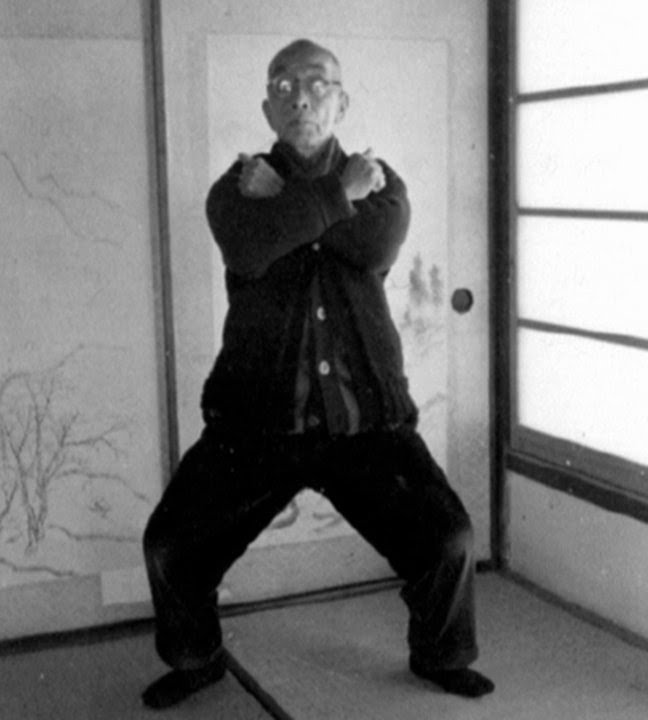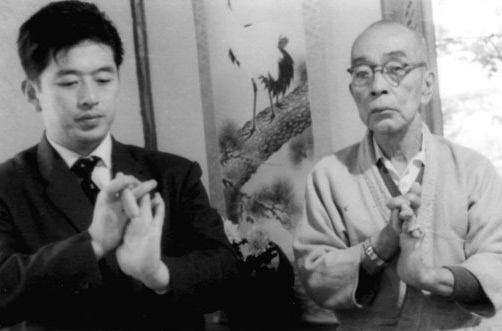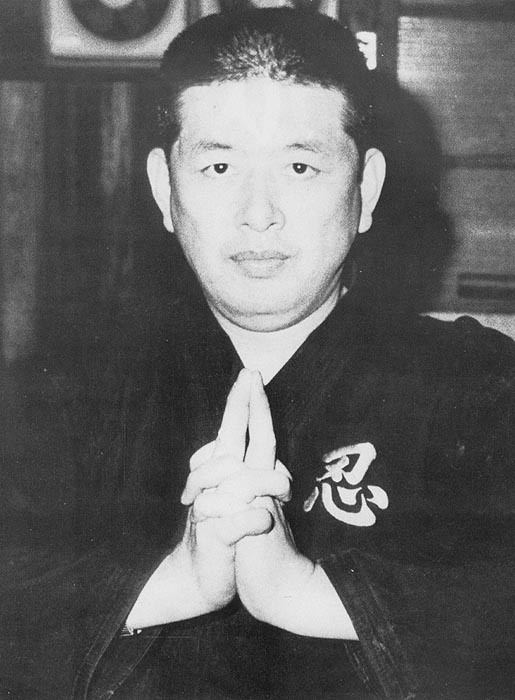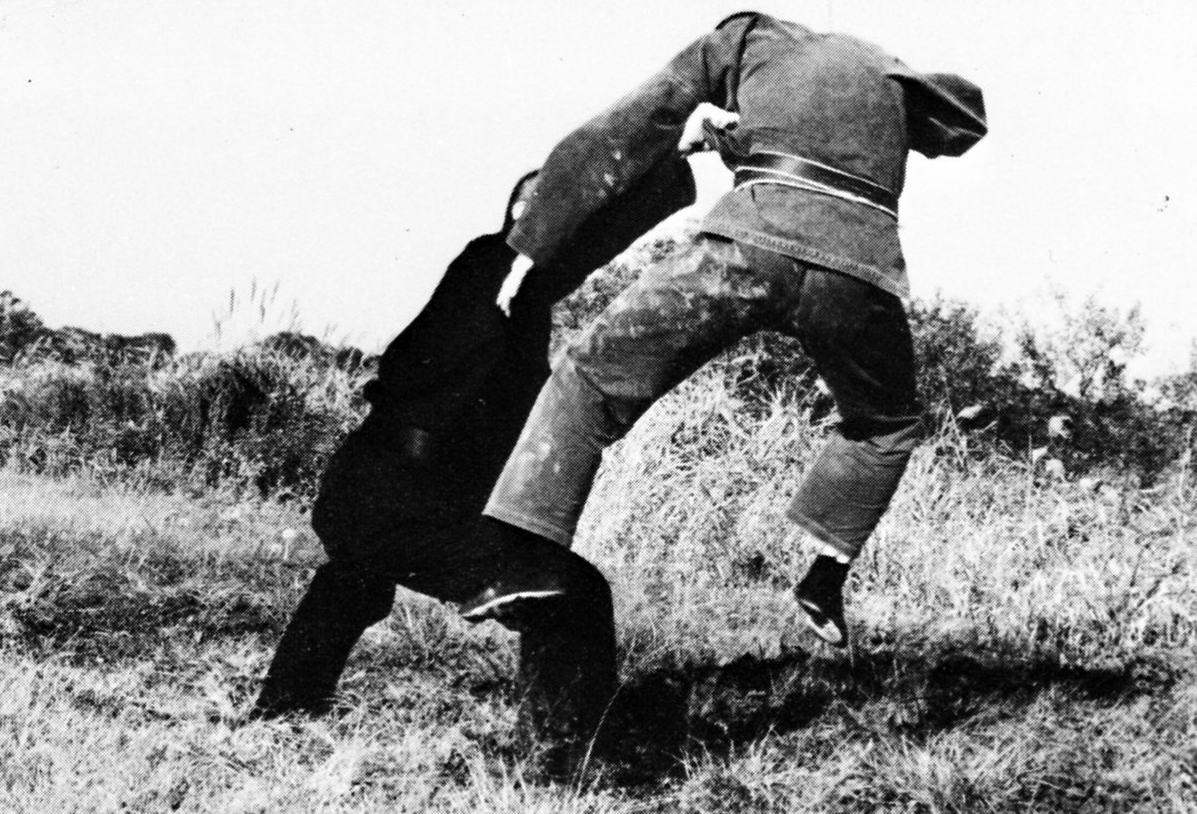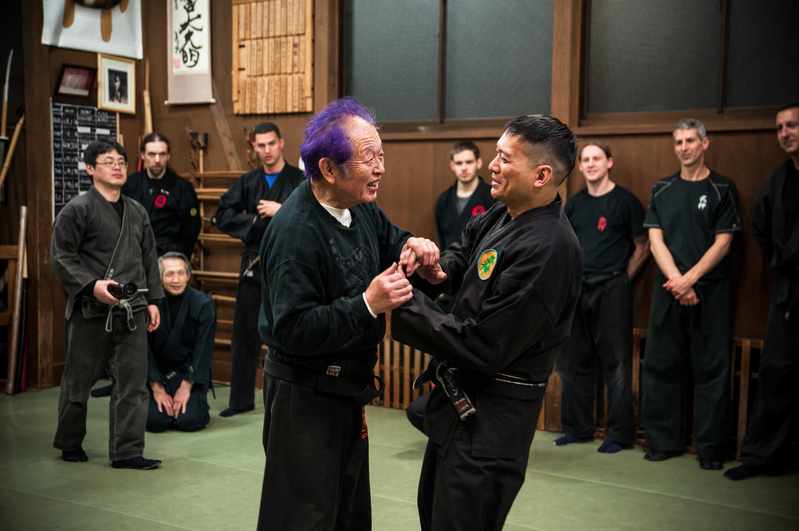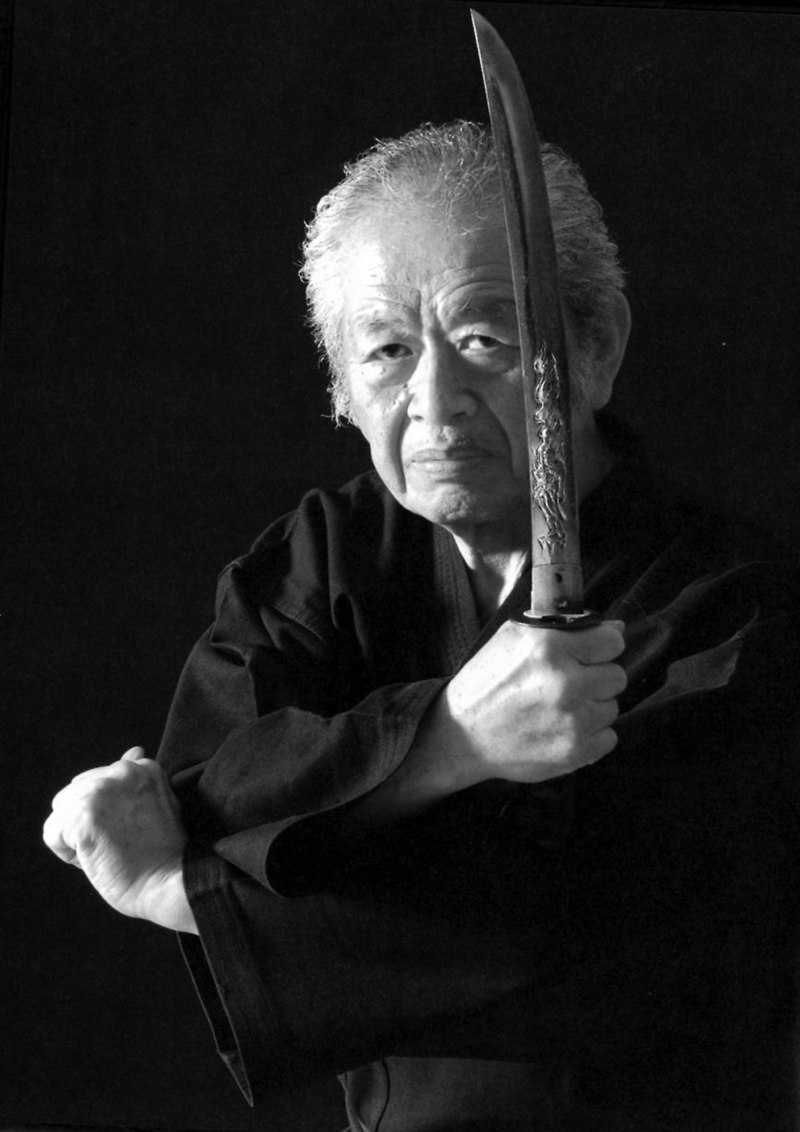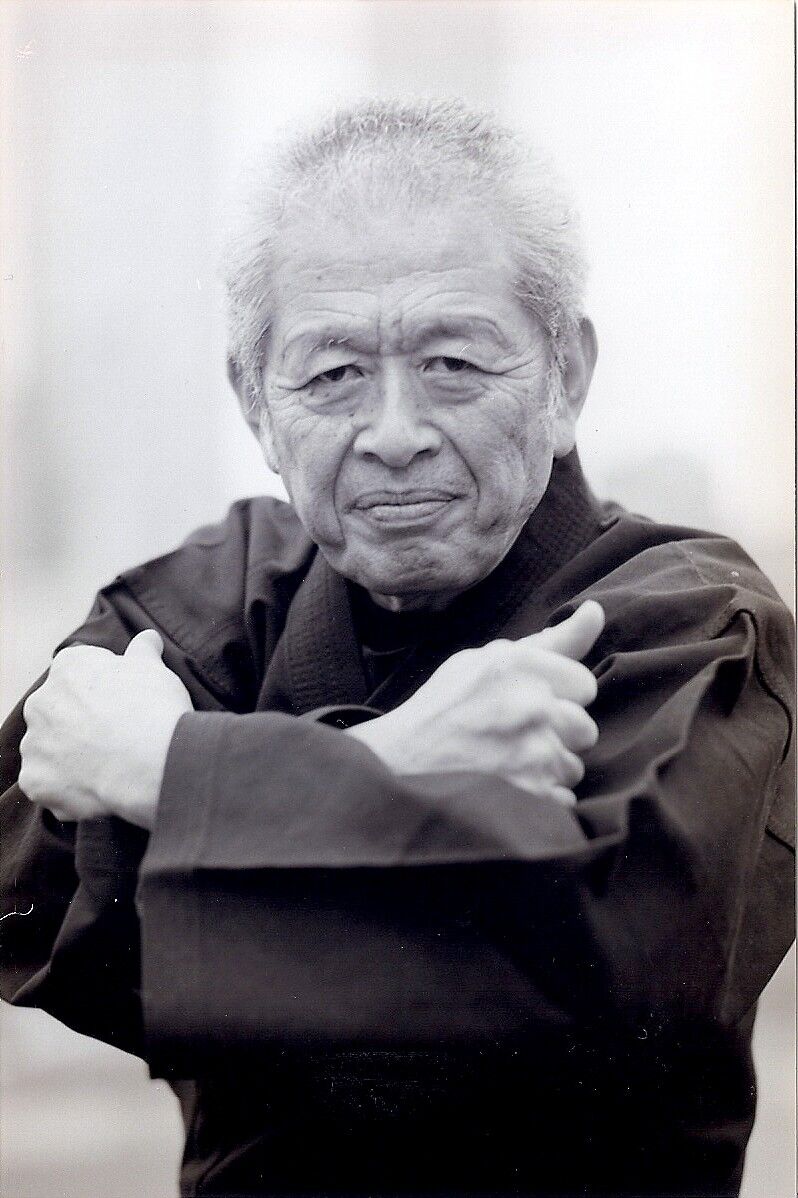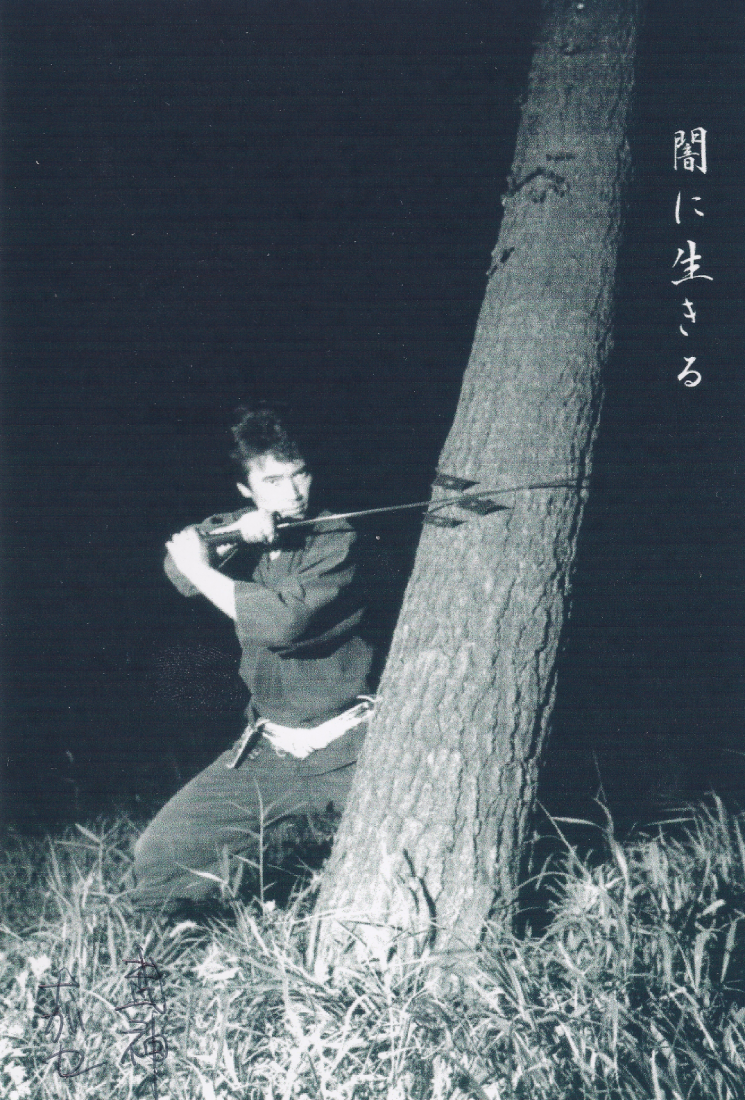Self-Cultivation Through "Ninja" Art - Learning Kobudo at a Dojo Popular with Foreigners (January 28, 2000)
Translated by Sayo Owada and Michael Asuncion
Located in Noda City, Chiba Prefecture is the Bujinkan "Ninjutsu" Dojo. This dojo teaches Japanese bujutsu that has been passed on for over a thousand years. Though it has not gained so much popularity with the Japanese people, it is very popular among many foreigners. When you visit their dojo, you will notice the following of traditional Japanese customs and the diverse atmosphere blending together as one.
When the reporter asked Hatsumi Sensei how many students he has over the phone prior to the interview, he replied, " I don't know. There is no point in counting how many students I have...People who want to come and learn will come and those who not will leave. Either way, it is their choice and it does not matter to me."
Dr. Masaaki Hatsumi (69) is the "soke" of Bujinkan Dojo. The Bujinkan Dojo teaches traditional Japanese kobujutsu and Dr. Hatsumi started the dojo over 40 years ago. Born into a budo family, Dr. Hatsumi has trained and mastered many fields including Togakure Ryu Ninpo, Kumogakure Ryu Ninpo, and 7 other schools,making him a master of 9 different schools. Within the schools there are ones that have been passed along from the Kamakura period, making him a real"ninja" of our time.
Honestly, because of what he had told us over the phone about not knowing the number of students in his dojo, we were a bit skeptical; does he have deshi that study under him -or does he not? However, when we stepped into the Tokyo Budokan in Adachi-ku where the weekly training takes place, we were taken by surprise.
In a large room with tatami floor, there were 32 students (more then 70% being foreigners mostly in their 20's and 30's) all wearing black dogi. There was one female.Because it was the beginning of the new year, there were not that many students as normally, when about 60 students usually train here. Surrounded by students that are easily over 6 feet tall, Hatsumi Sensei teaches the waza one after the other.
Hatsumi Sensei will say everything in Japanese and then it will be followed by an English translation, "you have to make them flow up, using the weight shift of your body." The American student who is there usually volunteers to translate. All of the student's expressions are very serious and both the Japanese and the foreigners are well-mannered and disciplined.
When Hatsumi Sensei says, "Go play", the students usually form a pair and practice the waza on each other. Compared to judo and karate, there are no loud vocal sounds made and even when they are doing the "ukemi". They roll around in a way so that it does not hurt them, while making it not as loud as compared to other martial arts. Even though many of the people there are well-built and tall, it is surprising how quiet they are; the only sound that you can hear is the sound of dogi being rubbed against the tatami floor.
A Very Diverse Training Atmosphere
The nationalities of the foreign students are quite diverse, as are their backgrounds; they range anywhere from the navy, secret police agents, to college professors. "I encourage all my students to study Japanese, for there are many terms in budo that cannot be explained in other languages," says Hatsumi Sensei. However, it is quite difficult to understand everything that Hatsumi Sensei is saying in Japanese. Therefore, students who are fluent in Japanese take turns translating while Hatsumi Sensei is teaching. At times it is said that there are up to three or four people translating what Hatsumi Sensei is saying (in Spanish, French, and English).
However, we could not stop wondering why there are so many foreigners studying Bujinkan Budo. Is it because the word "ninja" is something very traditional and exotic about the Japanese culture that attracts foreigners? Hatsumi Sensei replies, "I think that it may be that non-Japanese people have a purer appreciation to learn what is truly high quality."
Hatsumi sensei is very well known in many countries other than Japan. He has been invited to the FBI, CIA, and the LAPD to teach. There are many Bujinkan branches in such places as the United States and Europe; a total of 33 different countries. All of his students add up to tens of thousands. He has finally started to become recognized in Japan. In November of 1999, he was awarded with an International Cultural Award by the Japanese Cultural Association.
Ever since he came to Japan three years ago, Tim Bathrust (30) has been training directly with Hatsumi sensei. When he lived in Australia (where he grew up), he studied and mastered karate, aikido, iaido, and traveled throughout Spain and many other Asian countries. He says, "You can't help yourself by karate and aikido in real trouble. Fortunately, you don't really have street fights in Japan, but this is not common in other countries."
Certainly Bujinkan techniques are skills for real fighting, but unlike martial arts that have turned into fighting sports games, the Bujinkan teaches skills that you can really use to defend yourself, like the "koppojutsu" that Hatsumi Sensei was teaching the day we went for the interview. For example, they use strong attacks that aim at the opponent's "kyusho," places like the groin, throat, and eyes. Therefore, it unlikely to see overly exaggerated moves that you might see in other marital arts to please the crowd or audience.
"It is better if you don't have the opportunity to actually use these kinds of skills," explains Hatsumi Sensei about the bujutsu that he teaches.
"Budo is for protecting yourself, your country, and the ones that you love. That is why I do not train train people with the wrong mindset or attitude. If they cause any problems they will immediately be kicked out."
In joining the Bujinkan, you are questioned about your criminal history and your mental health. That is one of the things that are required before one is accepted to the Bujinkan. On the other hand, if you have the right moral and attitude, anyone can participate. There is even a student who is in a wheel chair with a physical handicap.
Hatsumi sensei added, "It is also not appropriate to show off that you are strong in your everyday life. Someone who is truly strong blends in with the people and you should not be able to tell them apart."
International Relations Through Budo
Yuchi Ooguri (57) is one of the few Japanese people training at the Bujinkan. He has been training for over 35 years now. "Initially when I started training, I was attracted to bujutsu because it gives the same opportunity regardless of your body size." Now Ooguri san says that studying at the Bujinkan also gave him an opportunity to meet people and make friends from all over the world. "I can only speak a little bit of English, but when I am training, I can understand what they are trying to say through their body language. Also, you learn to understand people as individuals who are there for the same purpose which is to learn budo, therefore the nationality of that person does not matter anymore." He mentions that there are some foreigners that come all the way to Japan just to study budo and looking at their serious expressions during training motivates him and all the other students there as well. Nagase Hiroshi (39) also says that through the pursuit (of budo) he was able to make friends from all over the world.
Benjamin Cole (29) works for Toyota's marketing division and has been in Japan for eight years. He is fluent in Japanese and often translates for Hatsumi Sensei during training. He used to study karate but his joints were injured during practice, and so he searched for martial arts that enabled him to utilize what he had, despite the weakness of his injury. He started training in the Bujinkan five years ago. Cole says that it may be a good idea for Japanese people to learn kobujutsu as well as something in the Japanese culture in which to be proud. Cole says, "Karate and judo have completely changed from their original forms with time and have become popular sporting events. But the truly wonderful culture existed before the changes took place."
Cole also mentioned that he was able to gain self-confidence through training and not become easily bothered emotionally. He explains the effects of budo and says that studying the ancient art of "ninjutsu" together with foreigners can serve as a unique means to improving international relations.
